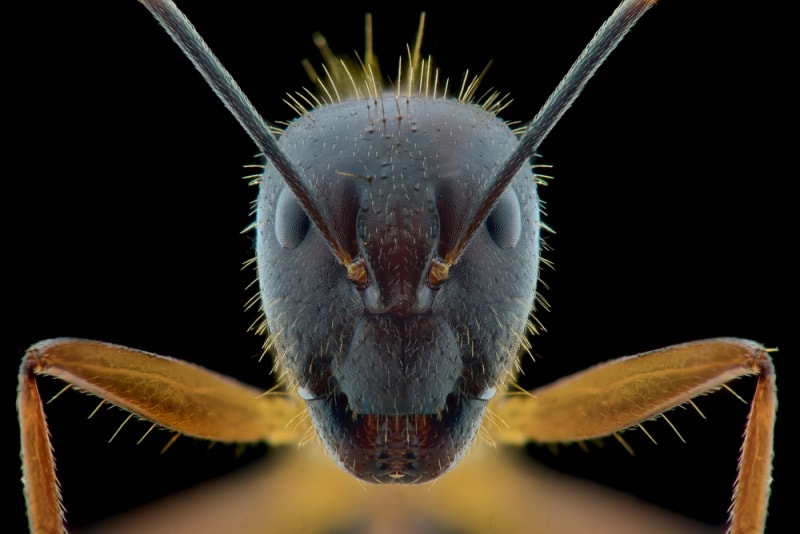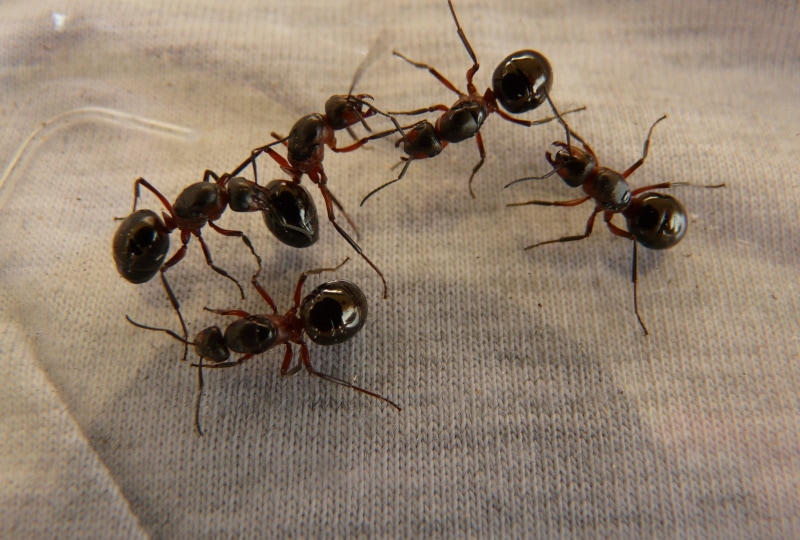What Does an Ant Look Like Under a Microscope? (Pictures Included)
Last Updated on

If you love to observe stuff under a microscope, you know that many things look surprisingly different under a microscope lens. Many people observe various insects, and the ones that catch our attention are ants.
These little creatures are the most widespread insects in the world. Although they may seem cute, do you know how an ant looks under a microscope? If not, check out the rest of our article to find out.

Ant Appearance
Ants are miniature insects, ranging from below 1 inch up to 2 inches in size. They have skinny, elongated bodies with swollen abdomens. Their mouthparts have chewing sections, which they can use to bite.
The majority of ants are brown, but there are also black and red ant specimens. As ants live in colonies and each colony has different-looking ants. Some of the most common ant species include:
- Bullet ants
- Black carpenter ants
- Redwood ants
- Blood-red ants
What Is the Study of Ants Called?
The study of ants is called myrmecology, and the studies you can perform on ants under a microscope allow you to study their anatomy and morphology. Typically, people observe ants, their larvae, eggs, and pupae.
What Does an Ant Look Like Under a Magnifying Glass?

Before you actually observe an ant under a microscope, you can use a magnifying glass. It’s much simpler to use, while you’ll get a chance to see ant body parts that you cannot notice with your bare eyes. Observing an ant under a magnifying glass will give you a general idea about its morphology. To perform this observation, you’ll need:
- Magnifying glass
- Tweezers
- Gloves
- Ants
You can find a couple of ants anywhere outside, while you could also order a kit of ants ready for observation. Once you have the ant, place the gloves on your hands, use a tweezer to pick the ant up, and observe it under a magnifying glass.
This experiment will allow you to see different parts of an ant’s body to study them, and it will help you identify different ant variations.
What Does an Ant Look Like Under a Microscope?

When you observe an ant under a microscope, you’ll be able to see its body, divided into three sections:
- Head
- Thorax
- Abdomen
You’ll also be able to see the ant’s wings and the irregular veins inside that provide additional support. When observing a thorax, you’ll see that it’s divided into three separate segments. Those segments have two pairs of legs each, while the second and third segments provide support for a pair of wings.
Depending on the magnifying power you use, you might be able to notice the petioles between the abdomen and thorax. That’s a body part that allows ants to be flexible. The antenna may bend in the middle and could appear segmented near the end.
When observing the eyes, you should see ommatidia. A microscope may also allow you to see three smaller eyes in a triangular form. They are widespread in male ants and queens.
- Two large upper mandibles
- The upper lip
- Lower mandibles
- Lower lip
- An array of hairs

Final Thoughts
If you would like to learn more about ants and their anatomy, observing them under a microscope will give you the perfect opportunity to discover everything about their body. If you don’t have a microscope, a magnifying glass will also work, but you will be able to see fewer details.
Related Reads:
- What Does Sand Look Like Under a Microscope? Pictures & Info!
- What Does Covid Look Like Under a Microscope? (With Pictures)
Featured Image Credit: DWI YULIANTO, Shutterstock
About the Author Visnja Radosavljevic
Visnja is a creative, adaptable content writer that covers various topics such as DIY, pets, home improvement, travel, gardening, and more. As a young mom and a college student, she didn’t have enough time to balance her personal and work life, so after multiple years of working a regular 9 to 5 job, she decided to pursue her passion and make a living out of it. She has been writing for a couple of years now, helping people to find valuable and interesting information online.
Related Articles:
How to Clean a Refractor Telescope: Step-by-Step Guide
How to Clean a Telescope Eyepiece: Step-by-Step Guide
How to Clean a Rifle Scope: 8 Expert Tips
Monocular vs Telescope: Differences Explained (With Pictures)
What Is a Monocular Used For? 8 Common Functions
How to Clean a Telescope Mirror: 8 Expert Tips
Brightfield vs Phase Contrast Microscopy: The Differences Explained
SkyCamHD Drone Review: Pros, Cons, FAQ, & Verdict
